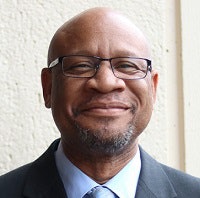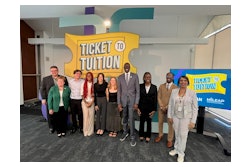As college professors, we hear it all the time, especially during the end of the semester, when it seems that’s the only time students decide to pay you an office visit.
“Excuse me, professor,” as they enter. Of course, you have heard it hundreds of times during your tenure. As you brace yourself for what is about to come, it seems that the words flow in slow motion: “Can you tell me how I’m doing in your class?”
 Dr. Errick D. Farmer
Dr. Errick D. FarmerThis scenario is very real for faculty members. However, one must decide to ask the question, “Whose responsibility is it?” Today’s environment of accountability reflects both the importance and relevance of the question, particularly considering the changing landscape of higher education. But how do we begin to answer appropriately and without blame?
Without a doubt, faculty members play an important role in the success of their students. It begins even before the first day students enter the classroom. No longer should the first day of class become a courtesy to call the class roll, but an opportunity to set the expectations for the rest of the semester and establish mutual understanding via the student/professor contract.
However, before we get to this critical moment of review, perhaps some reflection on the particulars of the implied roles is warranted.
Teaching and instruction can be described in any number of ways, reflecting a continuum from facilitating memorization to masterfully elevating learning as an art form. Somewhere in the middle is effective teaching, with a goal of imparting knowledge – ideally both content-specific and relevant to life. At times, this responsibility unfolds easily with the desired level of engagement and effort. We find an optimal academic exchange reinforcing the joys of teaching and learning.
 Dr. Sundra D. Kincey
Dr. Sundra D. KinceyAt other times, the dynamic may be rife with misgivings, resulting in “ugh” moments on both sides. What follows is a frustrating course experience where the connection does not seem to happen and the teaching/learning exchange becomes an exhausting process yielding less-than-satisfactory results.
As professors, we cannot perfectly anticipate the exact scenario we will encounter each time we teach. We can, however, prepare proactively to present and cement an academic experience that is conducive to real learning. Whether that be the subject matter or a much-needed, life-relevant lesson is determined as professor and student collaborate to secure the learning bag.
So, where lies the balance?
For the professor, there should be a consistent mindfulness and a very real determination of what is essential, and personal investment in the form of answering the following questions before the beginning of each term. The answers can be informed by recent experiences and evolving demands.
· Why am I teaching this course?
· Am I interested in student learning and its application and relevance to their lives?
· What must I do to ensure student learning and course success?
 Dr. Cheree Wiltsher
Dr. Cheree Wiltsher· Have I kept up with current learning modalities and the latest developments in my discipline?
· Have I assessed or am I minimally aware of new student learning trends?
· Am I adjusting my instruction based on the demands of the course group dynamics?
· Is my teaching style or method engaging students where they are?
· What is my role beyond the average student in supporting those who struggle, and also stimulating and further developing the most talented students?
· Am I prepared to not lower the bar, but to push and pull students towards it?
· Am I learning from my students?
· Have I set the expectations and standards clearly from the start?
The answers to these question set the tone for ensuring the learning bag is secured. Professors provide the collateral for the bag. Students earn that collateral through exerting their energy and effort toward obligations outlined in the contract. These represent the informational elements for success.
Prior to the first day of class, the professor should post the class syllabus and inform students to come prepared to review it. The syllabus, in essence, should serve as the course roadmap that provides the course objectives and describes what students should learn at the end of the course. More importantly, it will permit students to know what is expected of them and allow them to plan accordingly.
Just as important as the course syllabus is assessment. Students should not have to wait until midterm to have their first exam. Students should be tested more and not less. As educators, you should be using formative assessments early and often in the classroom to strengthen learning during the unit rather than waiting until the end or midterm and giving a summative assessment.
Long gone are the days of providing student feedback during class. In the new age of digital technology, multiple means exist to provide feedback to students, one of which is the learning management system (LMS) prescribed by the institution where faculty are employed. Providing timely feedback and grading is one method of using learning management systems as a tool to help foster student success. These tools are not only provided as a convenience for faculty, but also to help students be successful in the classroom.
In addition to providing timely feedback on student progress, faculty can also help maximize student success by finding creative ways to encourage students to come to class as scheduled. The freedom students gain when they enter college can be overwhelming, especially first-time-in-college (FTIC) students. Some of this new freedom includes the decision to skip class occasionally or, in some cases, often. Because we know that attendance is a critical determinant in students’ success in college, faculty can take ownership of the attendance requirements for their classes.
Accessibility is another key factor in which faculty may play a role in the success of students. Too many times, administrators hear that faculty are not available during their assigned office hours or that responses to email go unanswered or have a slow response rate. Once being a student ourselves, we can remember what this felt like and should try to lessen these types of experiences for our students today.
Day one of the class, as stated earlier, should include a dedicated discussion of the syllabus. Part of this discussion should include the times when the professor or instructor is available beyond the scheduled class times. The end goal is to be sure that students have reasonable access to the faculty as their role in the outcomes related to student success.
So when we ask the question, “Whose responsibility is it?” as faculty members and administrators ourselves, we must conclude that all university personnel are responsible for student learning, which includes faculty who are at the core of student learning. Faculty’s role in the success of students is critical to the vitality of an institution for all students, and even more so for institutions that serve a large minority population. Therefore, it is critical that faculty continue to take ownership of their role in student learning and are engaged in strategies to promote an inclusive learning environment designed to increase student success.
Dr. Errick D. Farmer is an assistant professor of professional leadership development in the School of Business and Industry; Dr. Sundra D. Kincey is the Director of Program Quality in the Division of Strategic Planning, Analysis, and Institutional Effectiveness; and Dr. Cheree Wiltsher is director and assistant professor in the School of Allied Health Science’s Division of Health Science; all at Florida A & M University.


















